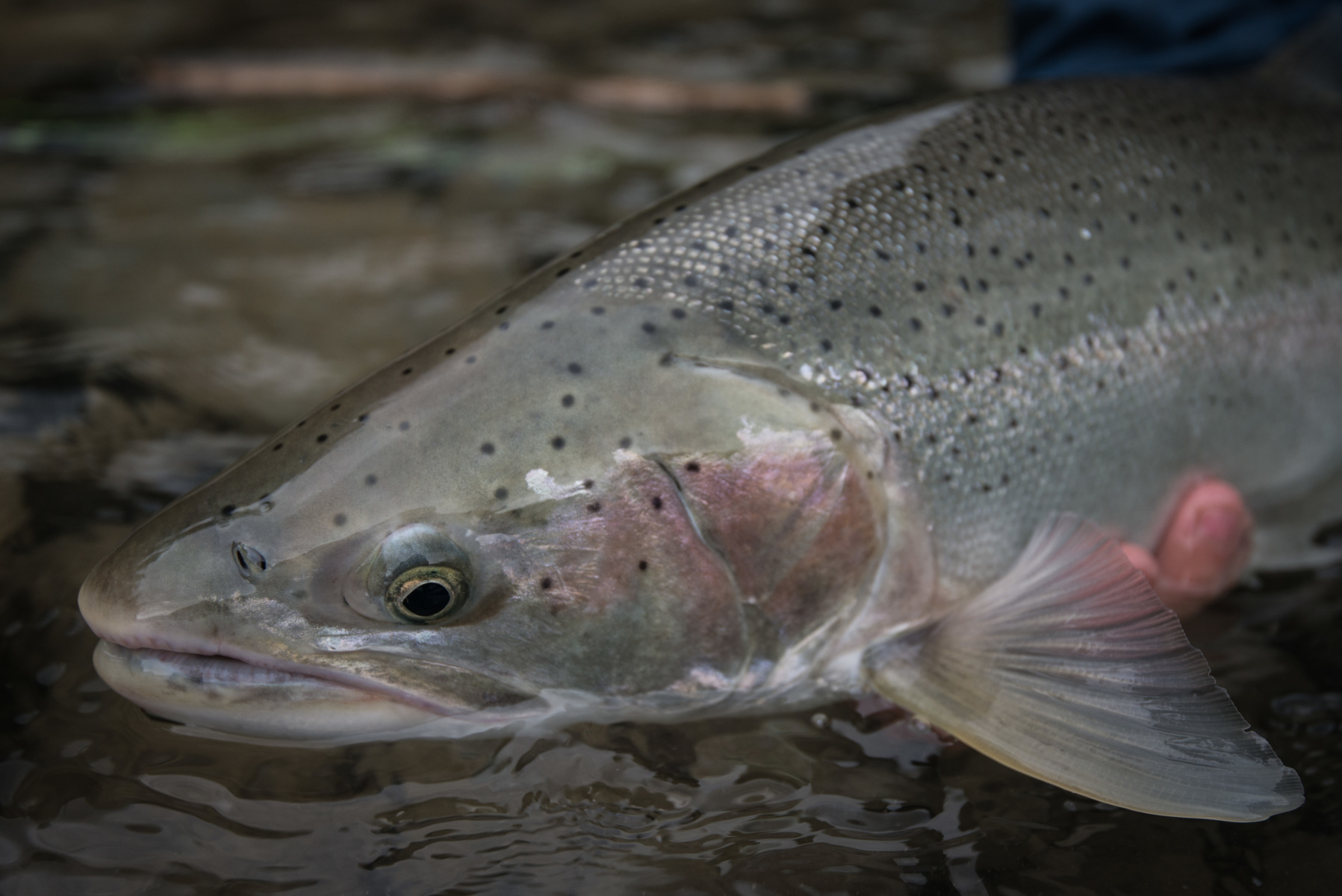The Steelhead With A Thousand Faces

The river is awash with reflected stars when she glides from the eddy into the heavy current, turns downstream, and with a kick of her tail, chases the full moon out to sea. The gentle pool she leaves behind is home to all the security, familiarity and comfort she has ever known. The vast unknown for which she swims is full of trials, tribulations and teeth. But the call of the salt is insistent. So she presses on to find her fate. She will die, be consumed and disappear. Or she will learn, strengthen, triumph, and be transformed. Then, and only then, she will return.
The steelhead’s story is our story. At least we like to think so. The call, separation, challenge, discovery, transformation, return – it is the Monomyth, the Hero’s Journey that underpins Beowulf, the Odyssey, the Torah, the Bible, the Koran, Don Quixote, all of Shakespeare and the latest Hollywood rom-com. We’ve told and retold the arc from the beginning of time. Each culture sees its own lessons in the tale, but the construct is universal. Perhaps because it hints at things that we all recognize as truths, but that no one can adequately explain. Maybe it passes through our genes like any other survival instinct. Maybe it just feels right.
Which is about the best I can offer when asked why I come to the river; why I spend lonely weeks leaning numb legs into the tireless current; why I live for months in ratty, rain-damp wool; why I lift, and sweep, and load, and let ‘er fly again, and again, and again. It just feels right.
I’m nobody’s idea of a hero. But I am no more immune to the tug of mystery than my ancestors were. And there comes a time when stories stop being enough. Home from the office in rush hour traffic might be the closest I’ll ever come to a harrowing quest. But I can go where the journey lives on in flesh and blood, where the mystery sometimes tugs back. And if I am very fortunate, if am able to prove up, if I can endure the bitter days of sleet and fruitless swings, I can join the timeless tale in some small way. Maybe if I take five more steps, throw one more mend, skate one more fly, a hero will appear, armored in chrome, and dance to the music of my singing reel.
“There is no other story,” said John Steinbeck. “… A man, after he has brushed off the dust and chips of his life, will have left only the hard, clean questions: Was it good or was it evil? Have I done well—or ill?”
In the moment to moment of our own stories the answers can be elusive. But the plight of wild steelhead offers a call that is as clear as midsummer snowmelt. Will we let them disappear, or will we learn, triumph, be transformed, and celebrate the hero’s return?
Let’s bring ’em back. Learn more about TU’s ambitious new Wild Steelhead Initiative here and here.

